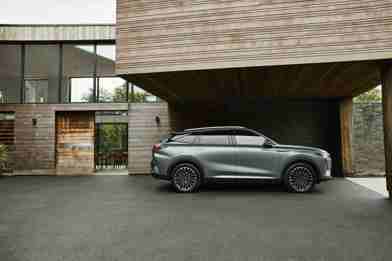While chasing fuel efficiency, many drivers often seek ways to optimise their vehicle's performance. One question you may have is whether cruise control can help save fuel or end up doing the opposite.
With that in mind, let's explore the relationship between cruise control and fuel consumption while shedding light on situations where it can lead to better mileage and instances where it may actually increase fuel usage.
What is cruise control?
Cruise control is a feature found in most modern vehicles. It allows you to set a desired speed for the automobile to maintain automatically.
Once activated, a system takes control of the throttle and keeps it a steady pace without the need for continuous inputs.
You can typically operate this system through buttons or switches on the steering wheel or dashboard, allowing the driver to engage, disengage, and adjust the cruise control function as needed.
Meanwhile, adaptive cruise control (ACC), sometimes known as radar cruise control or dynamic cruise control, is an advanced extension of the conventional feature.
While non-adaptive versions maintain a set speed, adaptive cruise control adds the capability to automatically adjust the vehicle's speed based on the surrounding traffic conditions. It does this through various sensors, including cameras, radar, or lidar.
When using cruise control makes sense
When used appropriately, cruise control can improve fuel economy in specific scenarios.
For example, driving at a consistent pace on open roads and highways often calls for cruise control. By eliminating fluctuations caused by human input, the feature keeps the vehicle operating at a steady speed, minimising unnecessary acceleration and braking that tend to waste fuel.
Another example is tackling uphill climbs. Cruise control can be beneficial in this scenario if your vehicle has an adaptive system. More advanced tech can adjust throttle inputs and gear ratios more efficiently, optimising fuel consumption and power output during ascents.
However, you should exercise caution during steep inclines, as these may require manual intervention to ensure safety.
When you shouldn't use cruise control
While cruise control can be practical in some scenarios, there are situations where it may not be the best choice.
Using cruise control in heavy traffic may not be helpful or fuel-efficient. Frequent acceleration and deceleration caused by the changing traffic dynamics can render cruise control ineffective and lead to increased fuel consumption.
However, some manufactures do offer adaptive cruise control with stop-and-go functionality. These systems allow you to use the feature even in congested areas. In this situation, use your best judgment to determine whether or not to activate the feature, as less advanced tech can be iffy at creeping speeds.
Lastly, cruise control may not be well-suited for winding roads or routes with multiple inclines and declines. These terrains require constant adjustments to maintain appropriate speeds through corners and manage changes in elevation effectively.
Manual control over acceleration and braking lets you make informed decisions based on road conditions, potentially maximising fuel economy.
Remember, fuel efficiency is not solely dependent on cruise control usage. Other factors, including vehicle maintenance, driving habits, and traffic conditions also play crucial roles.





